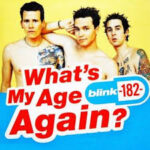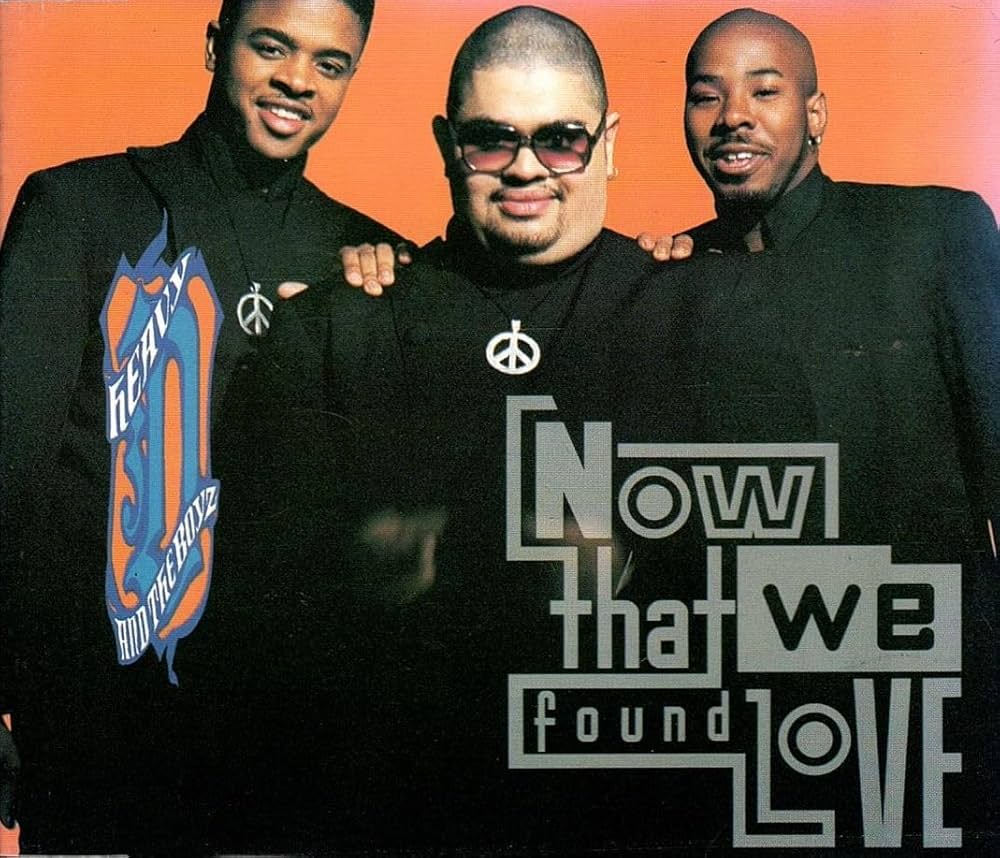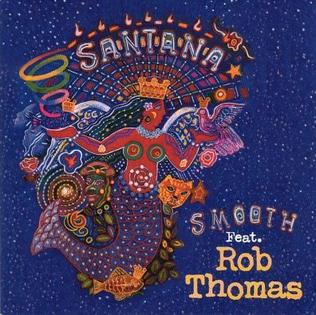 Blink-182’s “What’s My Age Again?” stands as one of the defining songs of late-1990s pop-punk, a track that distilled an entire generation’s unease about growing up, clung to the mischievous joy of adolescence, and packaged it all in two minutes and 28 seconds of sprinting guitars, pounding drums, and sardonic humor. Released in April 1999 as the lead single from their breakthrough album Enema of the State, the song became a cultural marker, cementing Blink-182’s reputation as the clown princes of pop-punk while also hinting at the deeper anxieties about maturity, responsibility, and identity that would continue to haunt the band’s career and the genre itself. More than two decades later, “What’s My Age Again?” remains as relevant as ever, its central question still echoing for listeners who find themselves negotiating the awkward balance between youth and adulthood.
Blink-182’s “What’s My Age Again?” stands as one of the defining songs of late-1990s pop-punk, a track that distilled an entire generation’s unease about growing up, clung to the mischievous joy of adolescence, and packaged it all in two minutes and 28 seconds of sprinting guitars, pounding drums, and sardonic humor. Released in April 1999 as the lead single from their breakthrough album Enema of the State, the song became a cultural marker, cementing Blink-182’s reputation as the clown princes of pop-punk while also hinting at the deeper anxieties about maturity, responsibility, and identity that would continue to haunt the band’s career and the genre itself. More than two decades later, “What’s My Age Again?” remains as relevant as ever, its central question still echoing for listeners who find themselves negotiating the awkward balance between youth and adulthood.
The origins of the song reflect Blink-182’s own transition from underground punk jokesters into mainstream icons. By the late 1990s, the band—Mark Hoppus on bass and vocals, Tom DeLonge on guitar and vocals, and Travis Barker on drums—had already released two albums that made waves in the skate-punk scene. Their 1997 album Dude Ranch featured the single “Dammit,” which gave them their first taste of national recognition, but it was with Enema of the State that Blink fully arrived. Working with producer Jerry Finn, who had helped shape the sound of Green Day’s Dookie, the band embraced a polished yet still irreverent sound that could bridge the gap between punk’s scrappy DIY ethos and pop radio’s melodic accessibility.
Mark Hoppus originally wrote “What’s My Age Again?” under the working title “Peter Pan Complex,” directly referencing the cultural shorthand for the inability—or refusal—to grow up. Hoppus, who was in his mid-20s at the time, was mulling over the ways in which immaturity and irresponsibility often defined not only his own life but also the lives of his peers. The song’s lyrics are a string of vignettes about juvenile behavior—calling a girlfriend’s mom to make prank calls, watching television instead of engaging in a relationship, ditching responsibilities—and the refrain crystallizes the theme: “Nobody likes you when you’re 23.” It’s a line that instantly became iconic, cited endlessly by fans and even referenced in internet culture as shorthand for arrested development. Hoppus himself has said that the lyric wasn’t meant to be prophetic, but once the song blew up, it became inescapable. For years afterward, fans would rib him about being 23, 33, or even 43, proving that the line had transcended the song to become part of the cultural lexicon.
Musically, the track is quintessential Blink-182: brisk, catchy, and deceptively simple. Travis Barker’s drumming provides a relentless, rolling momentum, with quick snare fills and cymbal crashes driving the song forward. Tom DeLonge’s guitar riff, slightly distorted but melodic, creates an immediate hook, while Hoppus’s bass work underpins the song with bounce and energy. The vocal delivery alternates between Hoppus’s low, almost flat narration of the verses and the more dynamic singalong nature of the chorus, a contrast that gave Blink’s music a distinctive signature. Jerry Finn’s production sharpened the edges without sanding down the band’s raw energy, making the track palatable to radio listeners while still recognizable as punk-rooted.
The song’s accompanying music video further cemented its place in pop culture history. Directed by Marcos Siega, the video featured the band members running naked through the streets of Los Angeles, causing chaos in public spaces, from running past unsuspecting pedestrians to barging through offices and television studios. While technically the band wore flesh-colored speedos, the impression of full nudity played directly into Blink’s reputation for adolescent humor and shock-value antics. The video was both hilarious and iconic, gaining massive rotation on MTV’s Total Request Live and ensuring that the song reached an even wider audience. At the time, pop-punk bands were jockeying for mainstream attention, and Blink’s willingness to embrace ridiculousness made them stand out. The video didn’t just promote the song; it embodied its ethos, offering a visual manifesto of youthful rebellion through absurdity.
Despite its jokey surface, “What’s My Age Again?” resonated on a deeper level than many initially realized. Beneath the gags and crude humor lay an honest reflection on the challenges of growing up and the reluctance to embrace adult responsibilities. The late teens and early twenties are often seen as the years when one should “get serious”—about careers, relationships, and personal development. But Blink’s song flipped that expectation, leaning into immaturity not as a flaw but as an identity. By asking “What’s my age again?” the narrator highlights a disconnect between chronological age and emotional maturity, a theme that many listeners found uncomfortably familiar. It wasn’t just about being silly; it was about the tension between societal expectations and personal desires.
Commercially, the song was a massive success. It peaked at number two on Billboard’s Modern Rock Tracks chart and cracked the top 60 of the Billboard Hot 100, an impressive feat for a punk-rooted band at the time. In international markets, it performed equally well, breaking into the top 20 in the UK and gaining traction in Australia, Canada, and beyond. Radio stations embraced the song, and its brief runtime made it easy for programmers to slot it into rotation. More importantly, it served as the launchpad for Enema of the State, an album that would go on to sell over 15 million copies worldwide and transform Blink-182 from cult favorites into mainstream stars.
The cultural impact of “What’s My Age Again?” cannot be overstated. For one, it helped codify the image of pop-punk as a genre not just defined by its sound but also by its attitude. The late 1990s saw a wave of bands like Green Day, Sum 41, Good Charlotte, and New Found Glory rising to prominence, but Blink’s embrace of toilet humor, irreverence, and youthful antics gave them a distinct identity. The song’s success also reinforced MTV’s role as the arbiter of youth culture at the time, where a silly, naked run through Los Angeles could turn a band into household names.
Lyrically, the song became something of an anthem for a particular kind of disaffected young adult. The line “Nobody likes you when you’re 23” became a generational tagline, quoted endlessly at birthdays and appearing on T-shirts, memes, and fan forums. What was initially just a throwaway lyric became something larger: a crystallization of the anxieties of young adulthood. Years later, other musicians and cultural commentators would note the uncanny accuracy of the lyric, with many citing age 23 as a time of significant upheaval, where the carefree years of adolescence clash with the demands of adulthood. Blink-182 had inadvertently tapped into a universal truth, and their goofy delivery only made it more approachable.
Critically, the song has been reassessed over the years as more than just a novelty. While some early reviews dismissed it as juvenile, retrospective takes often highlight its craftsmanship and enduring appeal. The economy of the songwriting—the way it delivers its narrative, chorus, and bridge all within under three minutes—is frequently praised. The interplay between Hoppus’s deadpan delivery and the energetic instrumentation creates a unique tension, suggesting that the band was more sophisticated than they often let on. Travis Barker’s drumming, in particular, has been lauded as a driving force that elevated Blink beyond their peers, giving their songs a level of precision and momentum that kept them from being dismissed as sloppy.
The legacy of “What’s My Age Again?” has extended far beyond its initial release. It continues to be a staple in Blink-182’s live performances, often played as a centerpiece of their setlist with audiences eagerly shouting along to every word. Its music video is frequently referenced in discussions of the most memorable clips of MTV’s golden age. Moreover, the song has lived on in countless cover versions, tributes, and even comedic reinterpretations. From acoustic renditions to orchestral arrangements, its adaptability underscores its strength as a piece of songwriting.
The track also helped pave the way for Blink-182’s future artistic growth. While Enema of the State was largely characterized by juvenile humor and upbeat anthems, the band would later explore darker, more introspective themes, particularly on albums like Untitled (2003). Yet even as they matured, “What’s My Age Again?” remained a reference point, a reminder of where they started and why they connected with fans in the first place. In many ways, the song became a blessing and a curse: a timeless anthem that fans never stopped loving, but also a marker that made it difficult for the band to escape their image as eternal pranksters.
From a broader cultural perspective, the song also speaks to the shifting definitions of adulthood. In the decades since its release, the idea that someone in their early twenties should already have life figured out has become less and less realistic, with economic pressures, cultural shifts, and changing social norms pushing traditional milestones further down the road. In this sense, “What’s My Age Again?” feels oddly prescient. Its central joke—that a 23-year-old could act like a teenager—has aged into a broader commentary on modern adulthood, where people in their twenties and even thirties often find themselves grappling with the same uncertainty and irresponsibility as the song’s narrator.
Looking back now, more than 25 years after its release, “What’s My Age Again?” has secured its place as both a time capsule of late-1990s pop-punk and a timeless anthem of youthful confusion. It embodies Blink-182’s ability to balance humor with honesty, immaturity with insight, and punk energy with pop accessibility. It also serves as a reminder that sometimes the silliest songs can be the most profound, not because they intend to be but because they capture a truth that resonates across generations.
The enduring popularity of the song proves that Blink-182 tapped into something larger than themselves. Whether fans first heard it blasting from MTV, on the radio during a summer drive, or years later on a streaming playlist, the track continues to elicit both laughter and reflection. At its core, “What’s My Age Again?” is about the absurdity of trying to define adulthood, about the embarrassment of acting younger than your years, and the freedom of refusing to care. It’s silly, catchy, and poignant all at once, a rare combination that explains why it remains one of the most beloved tracks not only in Blink-182’s catalog but in the broader history of pop-punk.
For Blink-182, the song was both a turning point and a statement of intent. They weren’t just another punk band with a handful of skate anthems; they were a group capable of capturing the zeitgeist with humor, melody, and just enough rawness to keep it authentic. As fans continue to sing along, whether they’re 23, 33, or beyond, the song’s central question never really goes away. Maybe that’s the true genius of “What’s My Age Again?”: it makes peace with the fact that growing up is overrated, and sometimes the best response is to laugh, turn up the volume, and keep running naked through life, unashamed and unbothered.


